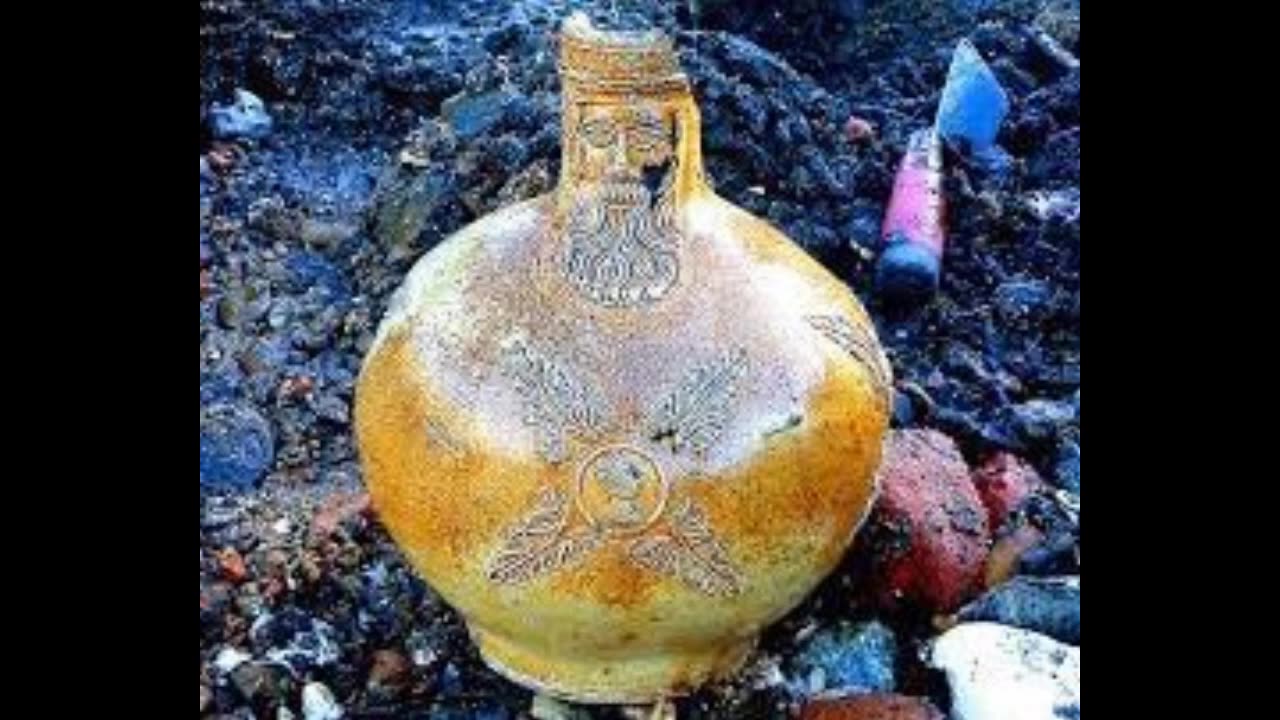Premium Only Content

Bellarmine Jugs and thier Conection to Witchcraft
https://solitarypaganism.com/folk-magick/bellarmine-jugs-and-their-connection-to-witchcraft/
Bellarmine jugs, bottles, and drinking-mugs were produced by the potteries of the Rhineland area, from the sixteenth century
onwards.
They were exported in large numbers to this country, where they became very popular.
These handsome stoneware vessels take their name from the fierce, bearded face embossed upon them, which was supposed to be that of
Cardinal Bellarmine.
They are also sometimes called greybeard jugs,on account of this typical decoration.
As well as being in general use as a household article, Bellarmine bottles were remarkably popular for the purpose of casting spells and
counterspells, especially in London and the eastern counties of England.
They have often been unearthed from the ruins of old English houses dating from the sixteenth and seventeenth centuries, in circumstances
which point to their connection with witchcraft.
The typical Bellarmine bottle has a large body and a narrow neck, which can be tightly stoppered.
When used as a witch-bottle, these vessels have been found with highly unpleasant contents, such as human hair entangled with sharp
nails, cuttings of human finger-nails, a piece of cloth in the shape of a heart and pierced with pins ; and sometimes human urine and salt. The
bottle was well sealed up, and then buried in some secret place, or thrown into a river or ditch.
One of these bottles was recovered from the mud of the Thamesin fairly recent years ; and the frequent post-war demolition works of
the 1 950s produced a number of examples of these mysterious vessels, brought to light when the foundations of old houses were revealed.
All had typically sinister contents as described above.
Whether the witch-bottle was a spell or a counterspell is not always clear.
One theory is that it was a form of self-defence, used by people who believed themselves to be ‘overlooked’ by the Evil Eye, to get back
at the person who was bewitching them.
Believing that a magical link existed between the witch and themselves, they tried to put the magic into reverse, and turn it back upon the sender.
They used their own hair, nail-clippings, urine, etc., as the magical link ; and a heart, cut probably from red cloth, to represent the witch’s
heart, which they pierced with pins.
Sharp nails were added, to nail the witch ; and salt, because witches were supposed to hate it.
Then the whole thing was buried in some dark and secret place, in the hopeful belief that it would cause the witch to decline and perish.
However, this spell could be used offensively also, if the practitioner got hold of someone else’s hair, nail-clippings, etc., to form the necessary magical link.
Nor, in those days when sanitation was decidedly primitive, and the chamber-pot a very necessary and often handsome article of furniture, would it be too difficult to obtain some of the hated person’s urine.
The pin-pierced hearts which have been recovered from these witch-bottles, seem to be going rather far for self-defence ; and the
very nastiness of the spell would give satisfaction to a hate-filled mind.
But why the choice of a Bellarmine bottle for this uncanny business ?
What had Cardinal Bellarmine to do with witchcraft ?
The answer, most probably, is nothing ; because the face on the bottle does not represent the Cardinal at all, but something much older.
Some of the earliest examples of this ware have a triple face on them ; that is, three faces combined into one symbolic countenance.
This bearded, triple face dates back to pre-Christian times in Celtic Europe, and represented an ancient god of Nature.
In Christian times, sculptors tried to work it into Church decorations by calling it a symbol of the Holy Trinity ; but in the sixteenth century
it was banned by the Council of Trent, who declared it to be pagan.
It is in fact one of the ways in which the Celtic Horned God, Cernunnos, is depicted.
Probably because of its old associations with paganism, the triple face was one of the attributes often given in medieval art to the Devil.
Dante in his Inferno portrays the great Devil in Hell, whom he calls ‘Dis’, in this way ; a typical instance of the god of the old religion becoming the devil of the new.
The complicated design of the triple face on the greybeard bottles, etc. , became simplified into a single powerful-looking countenance
bearded and virile ; but it was still the figure of the old pagan god, and hence a suitable vessel for mischief and forbidden arts.
But who knew that it was ? Who recognised it ?
The historical fact that these bottles, with their ancient design, were used for witchcraft, is a pointer to the underground survival of pagan
tradition, to a far later date than is generally attributed to it.
-
 9:21
9:21
asolitarypagan.com
1 year agoMaking Herbal Salves
1.76K -
 LIVE
LIVE
Man in America
6 hours agoThe DISTURBING Truth: How Seed Oils, the Vatican, and Procter & Gamble Are Connected w/ Dan Lyons
1,892 watching -
 6:46:07
6:46:07
Rance's Gaming Corner
7 hours agoTime for some RUMBLE FPS!! Get in here.. w/Fragniac
107K1 -
 1:30:48
1:30:48
Josh Pate's College Football Show
7 hours ago $2.83 earnedCFP Reaction Special | Early Quarterfinal Thoughts | Transfer Portal Intel | Fixing The Playoff
16.1K -
 23:55
23:55
CartierFamily
3 days agoElon & Vivek TRIGGER Congress as DOGE SHUTS DOWN Government
61.3K84 -
 5:43:44
5:43:44
Scammer Payback
2 days agoCalling Scammers Live
146K21 -
 18:38
18:38
VSiNLive
2 days agoProfessional Gambler Steve Fezzik LOVES this UNDERVALUED Point Spread!
109K17 -
 LIVE
LIVE
Right Side Broadcasting Network
10 days agoLIVE REPLAY: President Donald J. Trump Keynotes TPUSA’s AmFest 2024 Conference - 12/22/24
4,573 watching -
 4:31
4:31
CoachTY
1 day ago $26.84 earnedCOINBASE AND DESCI !!!!
158K11 -
 10:02
10:02
MichaelBisping
1 day agoBISPING: "Was FURY ROBBED?!" | Oleksandr Usyk vs Tyson Fury 2 INSTANT REACTION
84.1K13